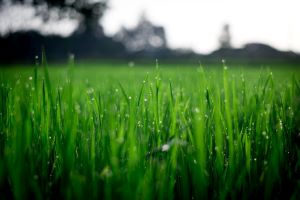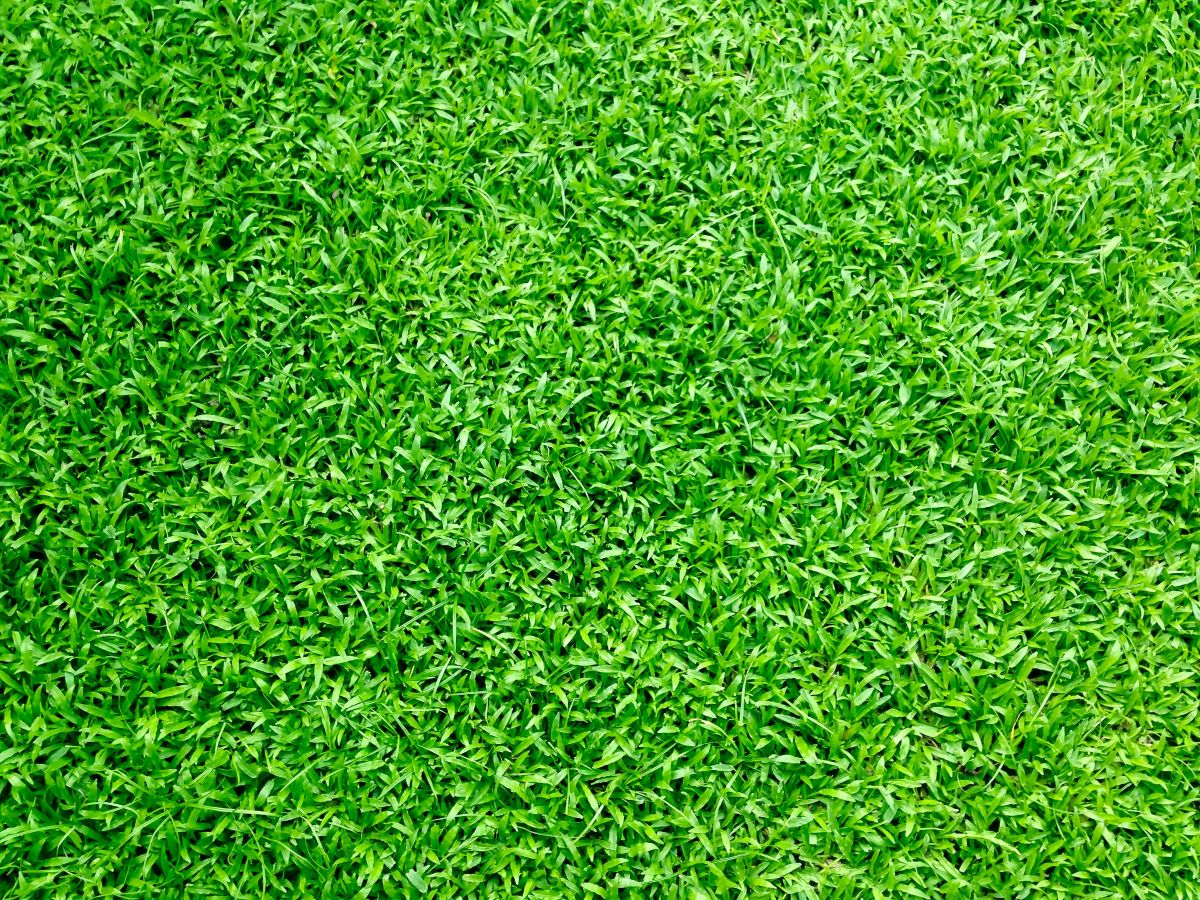Collective efforts like meticulous watering, precise feeding, and judicious mowing all contribute to a visually appealing and healthy lawn. However, one aspect that tends to be overlooked is lawn aeration – a vital practice significantly influencing the lawn’s overall health and vibrancy. A comprehensive comprehension of lawn aeration offers a foundation to understand why it is crucial and the ideal timing for optimal results. Beyond understanding the process, the choice of proper aeration tools can make a significant difference, with an array of tools available in the market, each with its unique advantages, disadvantages, and practical applications. Using these tools effectively, exploring alternate aeration methods, and adhering to safety guidelines round off the scope of this elucidation on lawn aeration. Let’s check out this ultimate guide to lawn aeration tools.
Understanding Lawn Aeration
Understanding Lawn Aeration
Lawn aeration is the process of creating small holes throughout your yard to allow air, water, and nutrients to penetrate the grass roots. It’s a vital process for your garden as it helps the grass grow deeply and vigorously. Dense, robust lawns have the additional benefit of crowding out any potentially harmful weeds. Using aeration tools helps alleviate soil compaction, a common issue where the soil becomes densely packed over time, making it difficult for grass roots to spread and absorb essential nutrients.
The Importance of Aeration
Several factors, including foot traffic and weather conditions, can lead to soil compaction. Compacted soil impedes root growth and hinders the absorption of water and nutrients, leading to depleted and unhealthy turf over time. Lawn aeration can mitigate these issues by creating pathways that facilitate the cost-effective distribution of water, air, and nutrients to the grassroots. It also encourages the growth of soil microorganisms, which can naturally break up thatch – a layer of dead organic matter that can choke your lawn.
Recognizing When to Aerate
Not all lawns necessitate yearly aeration. However, lawns that experience heavy use, be it from children or pets playing or frequent entertaining, would benefit from annual aeration. Furthermore, if your lawn dries out easily and feels spongy, that could suggest a thatch problem warranting aeration. The type of grass you have can also play an essential role; certain grass types such as Bermuda and Zoysia are more thatch-prone and would benefit more from aeration.

Making the Right Choice in Lawn Aeration Tools
A plethora of lawn aeration tools are available, including spike aerators and plug aerators. Spike aerators, aptly named for their usage of a spike-like device to create holes in the soil, are straightforward to use. However, they can inadvertently lead to increased soil compaction in certain lawns.
Contrastingly, plug or core aerators extract a core of grass and soil from the lawn, creating holes without compacting the surrounding soil. Although more effective, the use of plug aerators may require more effort.
In the end, besides selecting the appropriate tool, the timing of aeration is equally vital. Optimal times are during the growing season, typically in the spring or fall, as grass can recover and fill in the open areas once soil plugs are removed. It’s critical to understand that different grasses have varying growing seasons; cool season grass thrives when aerated in early spring or fall, while warm-season grass prefers late spring aeration.
Types of Lawn Aeration Tools
Understanding Plug Aeration
Amongst the myriad of lawn aeration tools, plug aerators stand out for their effectiveness. These devices function by extracting cores of soil and thatch from a lawn. This leads to small openings in the yard, permitting penetration of water, air, and vital nutrients to the grass roots, potentially yielding a healthier and more vibrant lawn.
Key advantages of plug aerators include their high efficacy and thoroughness. Since they actively remove soil sections, plug aerators are superior in preventing soil compaction compared to other aeration tools. They are particularly beneficial for heavy clay soils and severely compacted lawns. However, these machines come with their cons — they are relatively complex, cost more, and leave minor soil clumps on the lawn post-use, which some owners may find unpleasant until the clumps disperse.
Spike Aeration
Spike aerators, as the name suggests, use solid tines or spikes to poke holes in the soil. These tools operate differently from plug aerators because they do not remove soil; instead, they simply create paths for water, air, and nutrients to reach the grass roots.
Spike aerators have their own set of advantages. For one, they’re simpler and more convenient to use than plug aerators. They’re also more cost-effective. Despite these benefits, spike aerators are less effective at relieving soil compaction because they can potentially compact the soil further around the holes they make. They’re best used on sandy soils or lightly compacted lawns that require less rigorous aeration.
Liquid Aeration
Liquid aeration is a newer approach to lawn aeration, gaining popularity for its ease of use. It involves spraying a solution onto your lawn that helps to loosen soil and create space for air, water, and nutrients.
The key advantage of liquid aeration is the convenience it offers – no physical effort is needed beyond walking around your yard with a sprayer. Additionally, this type of aeration does not cause any physical disruption to your lawn, which means no unsightly clumps of soil will be left behind. However, liquid aeration may not be as proficient in addressing severely compacted soil. It’s often considered less effective than mechanical aeration methods and would likely require more frequent applications.
Overview
In general, different types of aeration tools each have their unique operational methods, advantages and disadvantages, and best case scenarios for use. When you’re selecting an aeration tool, it’s crucial to take into account the specific aeration requirements of your lawn, the resources at your disposal, and how much effort you’re able and willing to dedicate.
Using Lawn Aeration Tools Effectively
Selecting the Most Suitable Aeration Tool
There are numerous lawn aeration tools to select from, and the most beneficial tool for you will depend largely on the size of your lawn and the type of soil it has. A spike aerator, resembling a fork and which uses straightforward prongs for manually creating holes in the soil, is a popular choice. However, if your lawn is more extensive and harder, a plug aerator might be a better option. This device employs hollow tines to extract core plugs of grass and soil from the ground, thereby reducing soil compaction and enabling better absorption of water and nutrients.
Using a Spike Aerator
Using a spike aerator can be straightforward and manageable for small to medium-sized lawns. You begin by inserting the spikes into the soil and pushing down the lever to create holes. It is easy to control and direct, making it ideal for precision aeration around delicate plantings or along edges. Be prepared to apply a certain degree of strength, especially if your lawn is densely compacted or clay-heavy
Using a Plug Aerator
When it comes to plug aerators, the application process can be a bit more complex. These are wheeled devices that you push across your lawn. As they move, their tines cut out plugs of soil from the ground, creating small, open channels in your lawn. While it may require heavier exertion compared to spike aerators, remember that the results are often more rewarding as plug aerators alleviate soil compaction more effectively.
When to Aerate
The right time to aerate your lawn varies according to your grass type and specific climate, but generally, it is best to perform this task during your lawn’s most active growth period. For cool-season grasses such as bluegrass and ryegrass, early fall or springtime are ideal. Conversely, warm-season grasses like Bermuda and Buffalo grass respond best to aeration in late spring or early summer.
Frequency of Aeration
As for how often to aerate, it largely depends on the health of your lawn and the type of soil under it. If you have heavy clay soil or if your lawn faces heavy foot traffic, it might require aeration twice a year – in spring and fall. On the other hand, sandy or loamy soils with moderate foot traffic may only need aeration once every two years.
Caring for Lawn Aeration Tools
Proper care of your aeration tools can significantly extend their longevity and maintain their performance. After every use, ensure you clean the spikes or tines to remove any clinging soil or turf. Regularly inspect devices for any signs of wear and tear. Additionally, keep them in a dry, secure location to prevent rusting or degradation. Furthermore, a quick tune-up of the aerator’s wheels and moving parts with lubricating oil at the start of every aeration season can do wonders for its operational efficiency.
Precautions while Using Aeration Tools
When operating any sort of lawn aeration tool, it’s crucial to take the necessary safety measures. This includes wearing thick gloves to shield your hands from potential blisters or cuts, along with durable footwear to safeguard against accidental injuries that could stem from the sharp spikes or tines of the tool. Moreover, you should always be aware of any hidden dangers in your lawn like submerged cables, water lines, or tree roots that could harm you or damage your tool if struck.

Alternatives to Traditional Aeration Tools
Natural Alternatives to Mechanical Lawn Aeration
Lawn aeration is generally linked to the use of mechanical tools and devices that perforate and remove clumps of soil from the lawn to aid in its health. Yet, there exist more nature-friendly, biological means for promoting soil aeration. The most common of these use natural means like worms and advantageous microorganisms.
Worms, chiefly earthworms, play an instrumental role in enhancing soil health and quality. They burrow into the soil, instinctively forming air passages that facilitate soil breathability, thereby mimicking the effect of mechanical aeration. In addition to this, worms aid in breaking down thatch – the layer of organic material that develops on the soil surface. This method is frequently observed in natural or regenerative horticultural practices.
The presence of beneficial microorganisms in the soil adds to its loosening and aeration. When these microorganisms decompose organic matter, their waste products aggregate the soil particles. This aggregation forms spaces between the soil particles, enabling air and moisture to circulate better. In order to encourage the population of these good microorganisms in your lawn, you might consider the use of what’s commonly known as ‘compost tea’ or ‘compost extract’.
Exploring Professional Lawn Aeration Services
If you have a large lawn or are unable to commit the time or energy to lawn aeration, professional services are available to handle this job for you. These pros typically make use of mechanical aeration methods, employing machines specifically designed for larger coverage. These high-grade machines are often more adept at piercing hard, compacted soils which are challenging for personal use aerators.
When assessing the cost-effectiveness of professional aeration services, several key factors come into play. The size and the present condition of your lawn are the most evident factors. The larger or more poorly maintained your lawn, the more likely it requires extensive, professional treatment. However, if you possess a small, well-kept garden or lawn, a less vigorous, hands-on approach could suffice.
Engaging with professional services can also prove advantageous if your lawn’s ideal aeration window is limited and you find it difficult to devote the necessary time. You can schedule these professional lawn care companies to execute the task at the precise time.
Ultimately, it’s worth noting that while professional services require an investment, they bring expertise and equipment that can have a positive impact on your lawn’s overall health and aesthetics.

Safety Measures and Precautions
Introduction to Lawn Aeration Tools
Lawn aeration tools are crucial gardening instruments primarily designed to enhance the health and vitality of your lawn. These tools facilitate a process known as aeration. It includes creating small holes in the soil to allow air, water, and nutrients to reach the grass roots. This process fosters deep root growth and results in a healthier, more robust lawn.
The two primary types of lawn aeration tools you’ll encounter are spike aerators and plug aerators. Spike aerators puncture the ground with a solid tine or fork, while plug aerators extract a core or a ‘plug’ of soil and grass from the lawn. Although spike aerators are more compact and straightforward, they may cause soil compaction around the holes. On the other hand, plug aerators are more effective in alleviating compaction as they remove a plug of soil.
The Importance of Safety Practices
When dealing with lawn aeration tools, especially motorized versions, safety is paramount. Like all garden equipment, improper use can lead to accidents and injuries.
Wearing Appropriate Clothing and Protective Gear
One primary safety measure is wearing appropriate clothing and protective gear when operating lawn aeration tools. These tools can propel soil and small stones upwards, which could cause injuries. It’s advisable to wear sturdy footwear, preferably with steel toes, to protect your feet, especially when using heavier aeration equipment. Long pants and long-sleeved shirts are advisable to protect your arms and legs from flying debris. Eye protection, such as safety glasses, is also essential to safeguard your eyes.
Pre-aeration Precautions
Before starting the aeration process, take precautionary measures by marking out any underground utilities and sprinkler lines to avoid accidental damage. Missing this step could lead to costly repairs and potential safety hazards. You can do this by mapping out the locations of these features and marking them with flags or spray paint. Understanding where these lie will not only prevent damage but also ensure efficient use of the aerator.
Operational Safety
Last but not least, when operating your lawn aeration tool, maintain a steady and controlled speed, especially if you’re using a motorized aerator. Despite the robust nature of these tools, running them too fast could lead to loss of control and subsequent accidents or injuries. Also, make sure to keep children and pets at a safe distance while operating the machinery.
By incorporating these safety practices, you can ensure that the process of lawn aeration is not only beneficial for your lawn but also safe for you and others around.
Armed with comprehensive knowledge about the importance of lawn aeration, a variety of tools at your disposal, and the most effective ways to use them, you can make the process an integral part of your lawn maintenance routine. Exploring an array of traditional and non-traditional aeration approaches allows for finding the best fit for your specific lawn care needs. Furthermore, indispensable is the adherence to safety measures while using these tools, ensuring lawn care remains a joy rather than a risk. Ultimately, the realization that maintaining a lush and healthy lawn isn’t solely about watering, trimming, and feeding it right, but also about ensuring its long-term health through aeration, creates a well-rounded lawn care routine.

